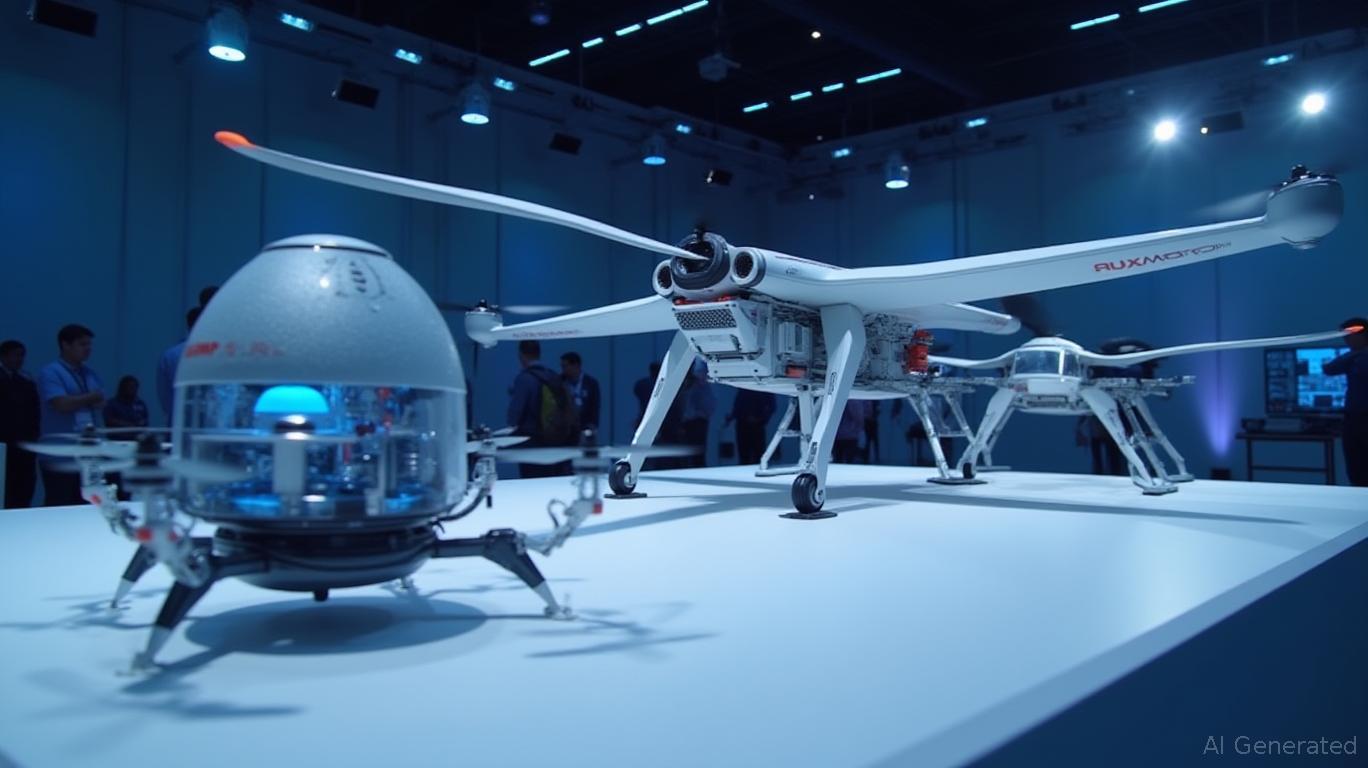AeroVironment's Strategic Integration: Dominating Autonomous Drone Systems in Defense and Beyond
The merger of
(AVAV) with BlueHalo in late 2024 marked a pivotal moment in the defense technology sector. By combining AVAV's expertise in autonomous drones and loitering munitions with BlueHalo's advanced capabilities in directed energy, cyber, and space systems, the company has positioned itself as a leader in multi-domain defense solutions. This strategic move not only enhances technological differentiation but also opens vast opportunities for market expansion in both defense and commercial sectors. Here's why investors should take note.
Technological Differentiation: A Multi-Domain Edge
The integration of BlueHalo's technologies has elevated AeroVironment's offerings far beyond traditional drones. Key advancements include:
- AI-Driven Autonomy: BlueHalo's AI/ML capabilities now power AeroVironment's systems, enabling smarter decision-making and enhanced mission adaptability. This is critical for next-generation platforms like MacCready Works, which focuses on cross-domain integration.
- Directed Energy Systems: BlueHalo's LOCUST Laser Weapon System (LWS) provides a first-to-market advantage in precision strike and defensive capabilities, reducing reliance on traditional munitions.
- Space and Cyber Solutions: The BADGER program, a $multi-billion contract with the U.S. Space Force, underscores the company's role in securing space-based communications and surveillance. BlueHalo's Titan counter-UAS systems further solidify its position in defending against drone threats.
These technologies create a robust moat against competitors, as AeroVironment now offers end-to-end solutions across air, land, sea, space, and cyber domains.
Market Expansion: Defense Growth and Commercial Potential
The merger has unlocked new revenue streams:
- Defense Sector: AeroVironment's addressable market has expanded into high-growth areas like directed energy, electronic warfare, and space systems. Contracts such as BADGER and the Switchblade 600 (selected for the U.S. DoD's Replicator initiative) highlight the strategic alignment with modern warfare needs.
- Commercial Applications: Beyond defense, autonomous drones have commercial uses in maritime surveillance (e.g., JUMP 20-X), infrastructure inspection, and emergency response. BlueHalo's AI-driven systems could also find applications in cybersecurity and data analytics for private enterprises.
Financial Fortitude and Synergies
The combined entity's financials are compelling:
- Pro Forma Revenue: Exceeds $1.7 billion in 2024, driven by BlueHalo's $900 million revenue and a $600 million funded backlog.
- Cost Savings: Operational efficiencies and shared best practices are projected to enhance profitability, with the transaction accretive to earnings in its first full year post-closure.
This scale positions AeroVironment to capitalize on rising defense budgets and emerging technologies without overextending its balance sheet.
Risks and Considerations
- Integration Challenges: Successfully merging cultures and systems across 3,750 employees and 40+ locations requires meticulous execution.
- Regulatory and Geopolitical Risks: Defense contracts depend on government funding and geopolitical stability. Delays in BADGER or other programs could impact revenue.
- Competition: Companies like Raytheon Technologies (RTX) and Lockheed Martin (LMT) also vie for defense tech dominance, though AeroVironment's niche focus may offer an edge.
Investment Outlook
AeroVironment's strategic integration makes it a compelling play on the multi-trillion-dollar defense tech market. With a diversified portfolio, strong backlog, and cutting-edge technologies, the company is well-positioned to benefit from global spending on autonomous systems and multi-domain defense.
Recommendation: Investors seeking exposure to defense innovation should consider AVAV, but with a long-term horizon. Short-term volatility may arise from integration risks or contract delays, but the long-term trajectory—bolstered by AI, space, and directed energy growth—is promising.
In a world where modern warfare demands seamless cross-domain capabilities, AeroVironment's strategic moves have solidified its status as a leader. For investors, this is a story of technological prowess meeting market opportunity—a recipe for sustained growth.

Comments
No comments yet